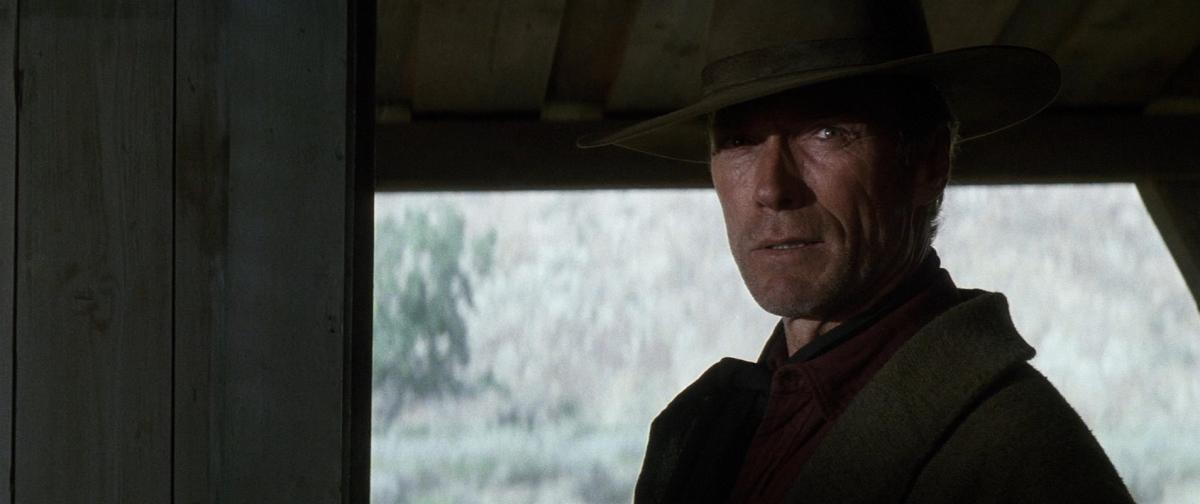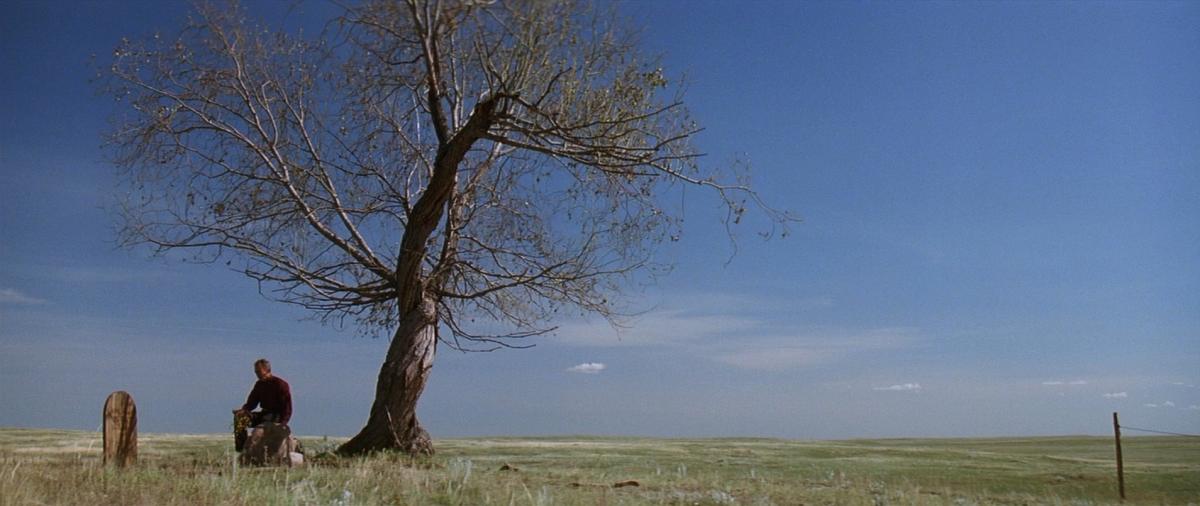There Are No More Heroes
Unforgiven by Clint Eastwood

One cannot just decide whatever – like Hackman imposing a five-horse fine for mutilating a woman in a brothel. In relationships between people, such decisions always have enormous consequences. The western is about order-disturbing recklessness, about frenzy and barbarism, and about trying to restore that order. The genre’s simplicity has to do with the presence of weapons: you can always physically eliminate the problem. But the western also always shows that simplicity never solves the underlying structural problem, quite the contrary. Unlike other kinds of action movies, where crime disappears amid the indifference of the big city, the western’s small community is watching intently: it registers every step and asks, demands, truly satisfying, lasting, liveable solutions. Not only must justice be done; legitimacy must also be maintained. The gunshot may be the ultimate means of exchange but it does not establish legitimacy.
The history of the western shows how justice and legitimacy are two separate aspects of the same social dynamic. We see them growing apart: justice becomes revenge or corruption, tailored to those who have the power. Justification is less and less within reach. The happy ending is increasingly about survival and winning, less about justification. There are no more heroes – they would establish order, legitimacy – only short-lived, pragmatic and quite catastrophic cleanups. The unattainability of legitimacy is also what Eastwood’s new film Unforgiven is about. Indeed, forgiving requires a broader order, a broader ecology than that of immediate, direct and profitable exchange.
Eastwood has been one of my favourite film characters for many years: on screen and behind the camera, he has built his meditation on society around his highly stylised image. With his limits as a character actor, he does not expand his register to psychological complexity or extremity. (He’s no De Niro.) He incarnates an ideal for the male psyche: lonely, autonomous, definitively freed from the mother, withdrawn from any question, from any cry of distress. Within the script and the images, this dull, nearly mineral, fully sterile mass nevertheless becomes a wondrous sound box for the romance of unexpressed emotions. The eternally adolescent boy with his chaste, timid and excessive but vague desire.
This stylised, cardboard diagram, which is as two-dimensional as any phantasmatic construction, emerged on the fringes of Hollywood cinema: in television series and Cinecittà westerns. Under Leone’s tutelage, the cleaned-up television sterility was followed by cynical naivety. At that time, ideology-critical interpretations reigned supreme, as did demystifications à la Eco, playful revelations of the constructs on which stories, roles and myths are based. Leone reinvented the language of cinema: he preferred rock-hard montage to découpage and direction, shock to suspense, mocking exaggerations to realistic probability. All this was well peppered with the Marxist vulgate that freed us from depth-psychological westerns. Leone’s camera could shamelessly take extreme positions. Bird’s-eye-views and worm’s-eye-views; expressionistic contrasts between foreground and background; short inserts and loose, dynamic camera movements; rapid shots between interacting figures; strong contrasts of light and dark. Leone had a primitive conception of film. He turned away from film direction à la Ford, Zinneman or Hawks. He carried through a constant emphasis on style, technical means and construction.
This extreme and eccentric formalism stayed with Eastwood: one notices it in his imago, in his roles with other directors and in his own directorial work. There is not a classical but a distorted relationship between the direction and its subject: the camera is not reluctantly at the service of figures and sequence, but constantly uses them for other, derived strategies. Take the two hysterical sequences at the beginning and end of the film: the very manner in which it is filmed exaggerates the stabs inflicted on the woman into full-blown rape; the final shoot-out at the end has the stately-festive quality of a ritual. In both cases, the direction has deliberately become something radically other than a subtle revelation of figures and relations; it is a machine of distortion and intensification.
Thank God that Eastwood never completely detached that expressionism from tradition, as Scorsese does. As poor as his film and his character are, he does not hide it; he adds nothing to the stereotype, he works with the constraints of his shadow play and thus manages to engage his audience and himself with something other than the solipsistic fantasy of fear, namely the patterns of social violence, which is somewhere between justice and justification.

Images from Unforgiven (Clint Eastwood, 1992)
This text originally appeared in Kunst & Cultuur, November 1992.
This translation was published by courtesy of Reinhilde Weyns and Bart Meuleman.
With the support of LUCA School of Arts, LUCA.breakoutproject.

